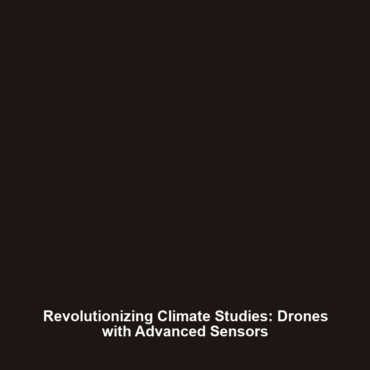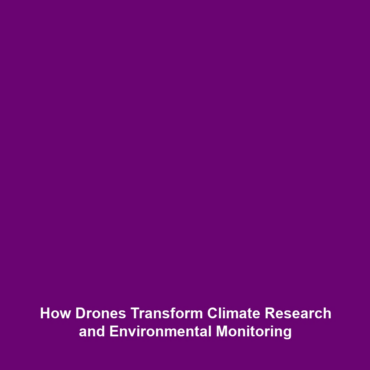Drones Equipped with Sensors for Climate Studies
Introduction
Drones equipped with sensors are transforming the field of climate studies by providing critical data on temperature, humidity, and CO2 levels. These advanced technologies play a pivotal role in understanding climate change and its impacts on ecosystems. Within the broader context of drones in science, such sensors enable researchers to gather high-resolution data that was once difficult to obtain. This article delves into the significance of these drones and their potential to innovate climate research.
Key Concepts
Understanding Drones in Science
Drones, or unmanned aerial vehicles (UAVs), have become valuable tools in scientific research. They are equipped with various sensors that can measure atmospheric conditions, including:
- Temperature: Essential for assessing climate trends.
- Humidity: Affects weather patterns and precipitation.
- CO2 Levels: Critical for monitoring greenhouse gas emissions.
These elements contribute significantly to the category of drones in science, enhancing field studies and offering a comprehensive view of environmental changes.
Applications and Real-World Uses
Drones equipped with sensors have a variety of practical applications in climate studies. Here are some notable examples:
- Agriculture: Monitoring crop health and soil conditions.
- Disaster Management: Assessing areas affected by natural disasters for recovery efforts.
- Urban Planning: Understanding urban heat islands and their impact on local climates.
These applications illustrate how drones equipped with sensors for climate studies are integral to advancing our comprehension of environmental science.
Current Challenges
Despite their effectiveness, studying or applying drones equipped with sensors poses certain challenges, including:
- Data Management: Handling large volumes of data collected can be overwhelming.
- Regulatory Issues: Navigating airspace regulations can hinder research efforts.
- Equipment Limitations: Battery life and sensor accuracy can affect data quality.
Addressing these challenges is critical for maximizing the potential of drones in climate research.
Future Research and Innovations
The future of drones equipped with sensors for climate studies is promising, with ongoing research focusing on:
- Enhanced Sensors: Development of next-gen sensors for better accuracy.
- AI Integration: Applying machine learning for data analysis and predictions.
- Sustainability Efforts: Advancing drone technology to use renewable energy sources.
These innovations will undoubtedly shape the future of drones in science and their application in climate studies.
Conclusion
Drones equipped with sensors for climate studies are playing a crucial role in collecting vital data on temperature, humidity, and CO2 levels. As a significant part of the broader category of drones in science, they present numerous applications, face certain challenges, and hold the promise for future innovations. To learn more about the intersection of technology and climate science, check out our related articles.

